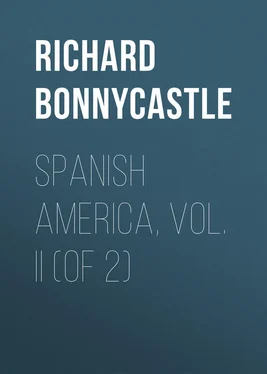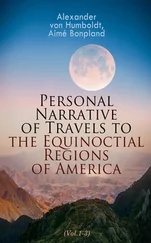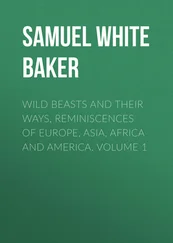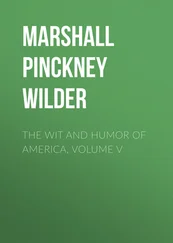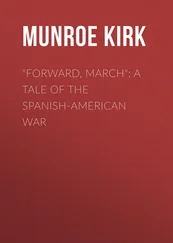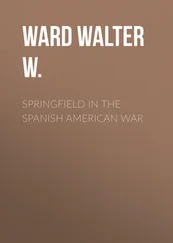Richard Bonnycastle - Spanish America, Vol. II (of 2)
Здесь есть возможность читать онлайн «Richard Bonnycastle - Spanish America, Vol. II (of 2)» — ознакомительный отрывок электронной книги совершенно бесплатно, а после прочтения отрывка купить полную версию. В некоторых случаях можно слушать аудио, скачать через торрент в формате fb2 и присутствует краткое содержание. Жанр: foreign_antique, foreign_prose, на английском языке. Описание произведения, (предисловие) а так же отзывы посетителей доступны на портале библиотеки ЛибКат.
- Название:Spanish America, Vol. II (of 2)
- Автор:
- Жанр:
- Год:неизвестен
- ISBN:нет данных
- Рейтинг книги:4 / 5. Голосов: 1
-
Избранное:Добавить в избранное
- Отзывы:
-
Ваша оценка:
- 80
- 1
- 2
- 3
- 4
- 5
Spanish America, Vol. II (of 2): краткое содержание, описание и аннотация
Предлагаем к чтению аннотацию, описание, краткое содержание или предисловие (зависит от того, что написал сам автор книги «Spanish America, Vol. II (of 2)»). Если вы не нашли необходимую информацию о книге — напишите в комментариях, мы постараемся отыскать её.
Spanish America, Vol. II (of 2) — читать онлайн ознакомительный отрывок
Ниже представлен текст книги, разбитый по страницам. Система сохранения места последней прочитанной страницы, позволяет с удобством читать онлайн бесплатно книгу «Spanish America, Vol. II (of 2)», без необходимости каждый раз заново искать на чём Вы остановились. Поставьте закладку, и сможете в любой момент перейти на страницу, на которой закончили чтение.
Интервал:
Закладка:
The port of Cumana is formed by the gulf of Cariaco, and its harbour by the river Manzanares. The gulf of Cariaco is thirty-eight miles in length and sixty-eight in breadth, with excellent anchoring ground; and the ocean is always smooth and unruffled from Porto Cabello to the point of Paria; so much so, that the coasting vessels are not decked; the only danger in the port of Cumana being a shoal, called Morro Roxo, half a mile in breadth and very steep on all sides.
This city has been repeatedly shook by subterrene convulsions; and the natives have a tradition that the gulf of Cariaco was formed by an earthquake, just before the third voyage of Columbus. In 1530, the whole coast was shaken, and the city, then called New Toledo, suffered by having its fort at the mouth of the river destroyed; an immense rent was made in the coast, from which asphaltum and water issued.
These shocks were very frequent towards the end of the 16th century, the sea often rising fifteen or twenty fathoms. On the twenty-first of October, 1766, the city was overthrown, and numbers of persons perished; the tremblings of the earth continued hourly for fourteen months; but in 1767, the inhabitants incamped in the streets, when the shocks only took place once a month; a great drought had happened in 1766, but during 1767, the rains were so continual, that the harvest was very abundant. In this memorable earthquake the ground opened and threw out hot water.
In 1794, they experienced another tremendous convulsion, and on the 14th of December, 1797, four-fifths of the city were utterly destroyed, the earth heaving up with loud subterraneous noises; but the people got into the streets in time, and a small number only perished of those who sought for refuge in the churches. Half an hour before this happened, there was a strong sulphureous smell near the castle, and a loud noise under the ground; flames were seen to rise from the banks of the river, and in several other places. These flames are frequently observed near the city on the plains, they do not burn the herbage, and issue from no apparent crevices, the people calling them the soul of the tyrant Aguirra, who took part in a revolt against Ursua, governor of Omaguas, and styled himself "the traitor." He descended the Amazons, and reached the island of Margarita by the rivers of Guiana.
Though so continually exposed to this dreadful calamity, the inhabitants of Cumana are in a measure insensible to it, as they imagine that it never occurs but at particular intervals, and that they have always sufficient notice by the state of the weather and other occurrences.
The neighbourhood of Cumana is infested with the rattle snake, the coral vipers, centipedes, &c.
Farms and country-seats adorn the banks of the Manzanares; at a little distance from the city these are beautifully situated, amid groves of cactus, tamarinds, brazilletoes, the enormous ceiba, palms, &c., and the soil is so rich for pasturage, that excellent milk and butter are produced.
Near Cumana the most noted mountains are the Cerro or chain of the Brigantin, about eighteen miles distant, the highest summit of which has a flat top, and is elevated more than 5000 feet above the sea, and the sides of this chain are nearly perpendicular, the country about it being a mere desert.
The inhabitants of Cumana attempted to cross these mountains with a road, but found it impracticable, and the passage to the plains of the interior lies over a part of the chain, known by the name of the Imposible, over which a new road is carrying on, the present one being very steep. This chain is continued to the extremity of the gulf of Cariaco, and forms the barrier between it and the ocean.
On the peninsula formed by this gulf are the salt works of Araya, which have been successively worked by most of the European nations who possess colonies in the West Indies. The Dutch were however expelled in 1605, when a fort or battery was built to prevent their return, and the mere or lake which these salt-works consist of, was overflowed by the sea in the great hurricane in 1726, which also destroyed the battery; but pits or reservoirs have been since dug, and the sea dyked out, so that great quantities of salt are still procured.
The consumption of this article in forming tasajo, or salted provision, amounts, in Barcelona and Cumana, to 9 or 10,000 fanegas (each 400lbs.) annually, of which the salt marsh or grounds of Araya, furnish 3000 fanegas, and the sea the rest.
The Indians use very little salt with their food, but the creoles and negroes live almost entirely on salted meat and fish. Salt being a royal monopoly, the revenue derived from Araya is considerable.
A small village is established on the peninsula of Araya, where the Indians keep large flocks of goats. This strip of land was the first place where the Spaniards began to found a town; and it contains springs and masses of petroleum; this substance existing also on its coasts, at Cape de la Brea, Punta Soto, and Guararitto. A stream of naptha issues from the bed of the sea, near these shores, and forms a visible spot, 1000 feet in diameter, among the weeds, with which the beach is covered.
Nueva Barcelona, the chief town of the province of the same name, is situated in a plain on the left bank of the river Neveri, half a league distant from the sea, in 10° 10' north latitude, and 64° 47' west longitude; ten leagues by land from Cumana.
This city was founded in 1636, by Juan de Urpin, who had been a canon, doctor, and counsellor of laws in St. Domingo, and a private soldier in the fort of Araya; he gave the name of New Catalonia to the province, which was afterwards changed to that of the city. It is meanly built, though it has a regular appearance; the streets are very dirty in the rainy season, and very dusty in the hot weather; and the immense quantity of hogs bred in this place renders the town disgustingly dirty, from the filth which they spread over the footways; and it was not till the year 1803, that some measures were taken to put a stop to this nuisance.
Barcelona contains one parish church and a convent of Franciscans, with a population of 14,000 souls, half whites and half mulattoes and negroes.
Such is the trade in live and dead cattle in this city, that the inhabitants have not turned their attention to the cultivation of the land, though excellently suited for cotton, cacao, and maize. Barcelona is the emporium for the contraband goods of Trinidad, and from hence they are dispersed through all the inland provinces.
The value of this trade has been computed at 400,000 dollars annually. Hides, tallow, oxen, mules, jirked and salted beef, form the great commercial articles of this port; this trade is chiefly carried on with the Havannah and West India Islands.
In the jurisdiction of Barcelona, which declared itself independent in the year 1811, commence those immense plains that stretch with those of Caraccas, as far south as the Orinoco. They are covered with excellent pasturage, and feed innumerable herds of cattle and mules, which are mostly kept on the banks of the rivers. Such immense quantities were killed before the breaking out of the present commotions, that the trade was at one time very considerable, the inhabitants of Barcelona being noted for their skill in salting meat; but just after the first symptoms of this struggle, the plains became infested with robbers, who deprived the owners of their beasts, and greatly lessened the value of the trade.
The other towns of Cumana are chiefly missionary establishments seated near the rivers, and on the great plains, the greater part of the country being yet in a state of nature. Of these towns the principal one is Cumanacoa , twelve leagues distant from Cumana, on a plain surrounded with lofty mountains, which was founded in 1717, by Domingo Arias, on his return from the Guaripiche river, where some Frenchmen had attempted to plant a colony; it was at first called San Baltazar de las Arias, but soon lost that appellation, for its present one. The climate of this place is mild, and even cold, although it is not more than 630 feet above the sea, owing probably to the abundance of rain, to the frequency of thick fogs, and to being surrounded by humid forests.
Читать дальшеИнтервал:
Закладка:
Похожие книги на «Spanish America, Vol. II (of 2)»
Представляем Вашему вниманию похожие книги на «Spanish America, Vol. II (of 2)» списком для выбора. Мы отобрали схожую по названию и смыслу литературу в надежде предоставить читателям больше вариантов отыскать новые, интересные, ещё непрочитанные произведения.
Обсуждение, отзывы о книге «Spanish America, Vol. II (of 2)» и просто собственные мнения читателей. Оставьте ваши комментарии, напишите, что Вы думаете о произведении, его смысле или главных героях. Укажите что конкретно понравилось, а что нет, и почему Вы так считаете.
